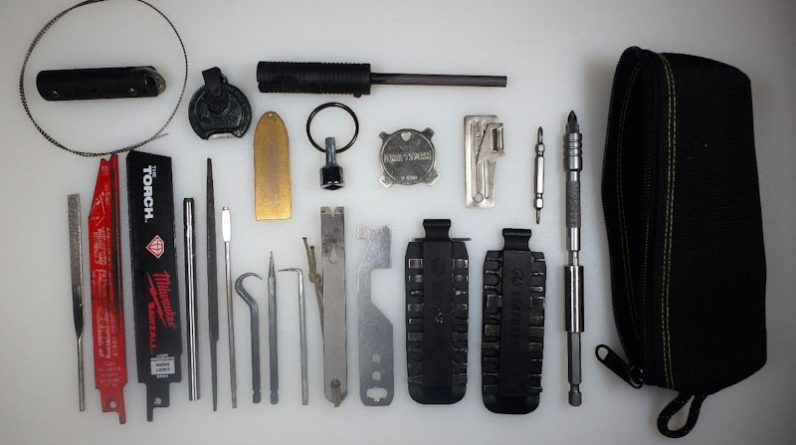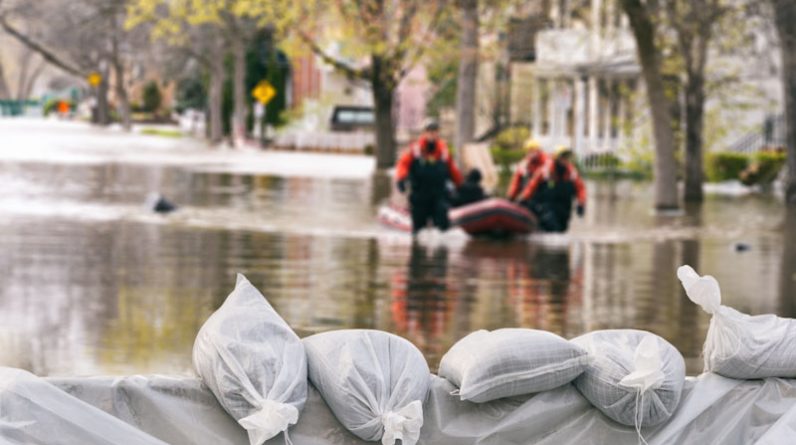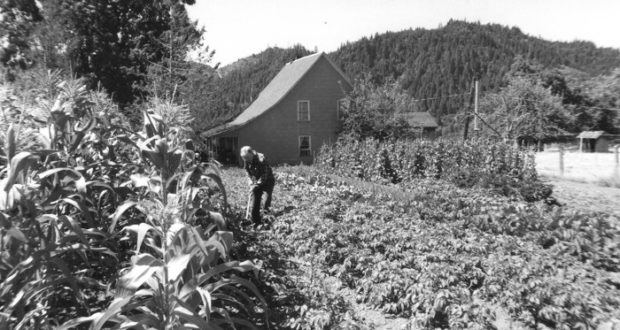I like to spend a lot of time in the great outdoors, and over the last decade, I’ve noticed that more and more campers and hikers leave their trash behind. I’ve never understood this type of behavior, and I often find myself picking up trash after my fellow “nature lovers” return to the concrete jungle.
To make it a more enjoyable activity, I always try to figure out ways to reuse the trash I’m picking up. I might not be able to teach people common sense and change their behavior, but at least I can give a new purpose to the trash I find.
Sadly, trash can be found almost everywhere, including remote natural areas like Mount Everest. It is estimated that each year, almost 10 tons of plastic ends up in the oceans of the world, and nearly 4 tons come from rivers. I believe that in the future, they will label us as the plastic generation, seeing how much plastic we produce and discard each year.
As you will see in this article, many of these discarded items can be creatively reused or combined with natural resources to improve your survival skills and gear when you find yourself in the wilderness. With a little bit of creativity, the trash you find in the woods can be reused and repurposed to support and sustain life.
Let’s look at the items one can find in the woods and how we can reuse them:
Plastic bottles
In a survival scenario in the woods, plastic bottles can serve as versatile tools to enhance your chances of making it through.
One vital application is water storage. After thoroughly cleaning and sterilizing the bottle using soap plants, it can become a reliable container for safe drinking water. This can be a lifesaver in situations where natural water sources might be inaccessible or contaminated.
Furthermore, you can employ a plastic bottle in a more advanced technique known as a solar still. By digging a hole in the ground and placing the bottle in the center, with its open end leading into a collection container, you create a system that can extract moisture from the ground. As the sun’s heat warms the earth, moisture evaporates from the soil, condenses on the inner surface of the bottle, and eventually drips into your container. This method provides a source of drinkable water when there are no readily available water sources nearby.
To create a minnow trap, begin by locating a transparent 2-liter plastic bottle. Firstly, remove the cap and horizontally cut off the upper third of the bottle. Place a weight, like a rock, inside the lower part of the bottle to keep the trap submerged, and then insert the cut-off top section backward into the remaining part of the bottle.
If necessary, you can punch holes through both halves and secure them with wire or wooden pins. Fill the bottle with water, and position it in a creek or stream with the open end facing upstream to catch minnows and small fish, which can be used for bait or food. Enhance the trap’s effectiveness by baiting it with food scraps. Minnows and chubs can also be crushed, bones included, and cooked into a stew.
But that’s not all you can do with plastic bottles. Remove the labels from these bottles, and they can serve as a resourceful tool for other purposes. For instance, fill one with clear water to create a makeshift lens for igniting fires. Ensure you have prepared tinder and ample firewood nearby before you start.
To use the bottle as a lens, fill it completely with water and move it around so that it focuses a concentrated ray of sunlight through the water onto the finest part of the tinder. You’ll need suitable tinder, such as charred punk wood or cloth, to facilitate ignition and ensure your fire-starting process is successful.
Lastly, a plastic bottle can serve as a valuable signaling device. In a survival situation, being spotted by search and rescue teams or passing aircraft can make all the difference. Use the reflective surface of the bottle to catch sunlight and signal for help. You can do this by flashing the sunlight towards potential rescuers, increasing your visibility in the wilderness.
Hard plastic
Hard plastic, often discarded and overlooked in the wilderness, is a valuable resource with a multitude of survival applications.
Hard plastic can be reshaped into makeshift cutting tools. Heat the plastic over a flame to soften it, and then mold it into the desired shape. Once it cools and hardens, you have a serviceable knife or small cutting implement.
For those looking to improve their fishing gear, hard plastic can be shaped into fishing lures. Mold it into fish-like forms and attach hooks to increase your chances of catching fish. The reflective nature of plastic can attract fish, enhancing your fishing success.
In a pinch, you can also repurpose hard plastic into cordage and bindings. By melting it down, you can create strong cords or straps to secure shelter materials, repair gear, or fashion makeshift straps for carrying essentials.
Moreover, hard plastic pieces can serve as reliable repair patches. Cut small sections to reinforce weak points or tears in your equipment, clothing, or shelter materials, extending their usability in the wild.
Hard plastic’s versatility extends to container creation as well. With some creativity, you can fashion it into small containers or cups for holding water, food, or other necessities. Always ensure that the plastic is thoroughly cleaned and sterilized for holding liquids safely.
In emergency situations, reflective plastic can double as a signaling device. Use it to catch sunlight and attract attention by waving it or positioning it strategically. It can be a vital tool for increasing your visibility in the wilderness and signaling for help.
In colder climates, layering pieces of hard plastic between clothing or bedding materials can create insulation and help retain body heat, providing some comfort in harsh weather.
In regions with maple trees, you can even shape a piece of hard plastic into a container for collecting sap to make syrup, which can be a valuable source of energy and sustenance.
Lastly, if you find yourself in snowy terrain, adapt hard plastic into bindings for improvised snowshoes. Secure these bindings to your footwear to distribute your weight and make traversing deep snow more manageable.
Plastic bags
Discarded plastic bags, often seen as litter, can be surprisingly versatile in a survival situation. Beyond their typical usage, there are several ingenious ways to put them to good use.
One of the most practical applications is for rainwater collection. Use plastic bags to catch and store rainwater, providing a crucial source of hydration in the wilderness. Simply spread the bag open and let the rainwater accumulate within it.
Additionally, plastic bags can be repurposed for transporting essential materials for shelter construction. Whether you’re gathering firewood or moving materials for shelter assembly, these bags can serve as makeshift carriers, making your tasks more manageable.
For those looking to create strong rope and cordage, plastic sheeting or garbage bags can be a valuable resource. Utilizing the reverse wrap method, you can fashion strong cords from these materials. This cord can then be used to lash shelter poles or secure other critical components of your survival shelter.
Strips or sheets of plastic can also be utilized for signaling and route marking. Brightly colored plastic pieces can attract attention and serve as markers to indicate a specific path or location.
When it comes to shelter construction, plastic garbage bags can be invaluable. If available, use duct tape to reinforce areas of the bags that will serve as grommets, improving their durability. Employ taut line hitches when tying out your shelter, ensuring stability even in windy conditions. Position your shelter in an area sheltered by trees to prevent wind damage.
Furthermore, you can take your shelter to the next level by using plastic sheeting to enhance its effectiveness, especially during winter. Adding plastic sheeting across the front of a regular survival lean-to, along with other suitable materials, can transform it into a super shelter. This modification significantly improves its ability to sustain life in harsh weather conditions, making it a valuable asset in your survival toolkit.
Steel cans
Steel cans, often overlooked as single-use containers, actually offer a wealth of possibilities in a survival scenario. Beyond their typical function, they can be transformed into invaluable tools for various purposes.
One of their practical applications is as containers. A large coffee can, for example, can be repurposed as an ideal boiler for disinfecting water, ensuring it’s safe for consumption. However, any steel can can serve as a makeshift boiler in an emergency. This can be a lifesaver when clean water sources are scarce.
In addition to their use as containers, steel cans can also serve as field-expedient shovels if the need arises. The sturdy construction of these cans makes them suitable for digging and moving earth when crafting shelters or fire pits.
Furthermore, steel cans can be employed to store essential supplies like food and water. They provide a protective and portable means of carrying these resources, helping you stay nourished and hydrated in the wilderness.
New steel cans, with their reflective surfaces, can double as signaling devices. Use them to catch sunlight and create reflector signals, increasing your chances of attracting attention in emergency situations.
When it comes to fire management, steel cans are versatile tools. They are excellent for carrying fire from one location to another, ensuring you can easily transport your heat source. Moreover, larger cans can be repurposed to create hobo-style stoves. By fashioning these stoves from steel cans and using small sticks for fuel, you can generate a really hot fire, suitable for boiling water and cooking meals in a survival setting.
Aluminum cans
While it may seem like a long shot, an aluminum can has a remarkable purpose as a parabolic mirror for fire starting. To achieve this, begin by polishing the can’s bottom using fine ashes from a fire or, if available in your kit, even chocolate. Once it’s shiny and reflective, you can use it to focus a concentrated, white dot of sunlight onto tinder. This technique harnesses the power of solar energy to ignite your fire, which can be a crucial skill in survival situations.
In addition to fire starting, aluminum cans can be repurposed for creating a loud signal whistle. With a bit of creativity, you can cut two strips from the can and shape them to form a whistle. This ingenious tool can help you alert others to your presence or signal for help when you need it most.
Aluminum cans can also be transformed into effective fishing lures. Cut the can into an attractive shape and attach hooks to increase your chances of catching fish, providing a valuable food source.
For organizing your fishing gear, wind fishing line around a small section of an aluminum can to create a portable and organized fishing line spool, ensuring you’re ready for any fishing opportunity.
Moreover, an aluminum can’s versatility extends to serving as a container for small items. Cut off the top to create a small, open container ideal for storing essential gear like fishing hooks, matches, or other compact necessities.
In navigation, a small piece of aluminum can float in water and act as a rudimentary compass, pointing north due to its magnetic properties, helping you maintain your sense of direction.
In shelter construction and repair, aluminum cans can be cut into patches to mend tears or holes in your shelter material, providing a quick and effective solution to maintain shelter integrity.
In the event you have candles, aluminum cans can also be fashioned into emergency candle holders, protecting the flame from wind and moisture and ensuring a steady light source.
If you’re considering trapping for food, aluminum can strips can be used in constructing small animal traps or snares, increasing your chances of catching valuable sustenance.
Lastly, utilize the shiny surface of an aluminum can as a reflector. This can direct sunlight onto plants for solar dehydration or serve as a signaling device to attract attention and signal for help in a survival situation.
Disposable lighters
Disposable lighters, commonly seen as single-use devices, hold untapped potential even after their fuel has been expended. In a survival scenario, these lighters can be repurposed as reliable fire-starting tools, extending their usefulness considerably.
One approach is to utilize the flint within the lighter to create sparks. By striking the flint against the wheel, you can send sparks into materials like charcoal from an old campfire. These sparks can ignite tinder materials, setting the stage for your fire.
Animal bones
When you come across animal bones during your travels in the wilderness, they can prove to be a valuable resource for crafting a range of implements. However, the process of shaping and utilizing these bones requires some careful steps.
First and foremost, carefully inspect the bones for any natural cracks or fractures that may already exist. These fractures can be essential starting points for breaking the bone into smaller, more manageable pieces. Keep in mind that bone tends to fracture spirally, but this can be controlled by strategically using the bone’s natural contours to your advantage, especially when dealing with sharply angled pieces of stone.
Once you have successfully broken the bone into smaller pieces, the next step involves shaping these pieces to suit your needs. This can be achieved through abrasion, which essentially involves rubbing the bone against a coarse stone surface.
The stone should be coarse enough to grip the bone material when rubbed against it. This gradual abrasion process allows you to shape the bone pieces into the desired implements, whether they be tools, weapons, or other useful items for survival in the wild.
Old clothing
Old clothing, even when it’s no longer suitable for wear, possesses a remarkable versatility that can prove invaluable in survival situations. One primary function is insulation. By layering old clothing items, you can create an effective barrier against the cold. These layers trap warm air close to your body, helping to preserve essential body heat, particularly in frigid conditions. Additionally, consider using pieces of old clothing to stuff gaps in your shelter, providing extra insulation and protection against the elements.
Another practical use is transforming old clothing into cordage. By tearing or cutting clothing into strips or threads, you can fashion makeshift ropes or cords. These versatile cords can be used for a variety of purposes, including lashing together shelter materials, constructing tools, setting up traps, or securing items in your camp.
Old clothing can also serve as a valuable resource for medical needs. When injuries occur, you can tear or cut fabric into strips to create bandages or dressings. Sterilize these strips and use them to wrap wounds, control bleeding, or protect against infection. In the absence of proper medical supplies, repurposed clothing can be a crucial part of your first aid toolkit.
Additionally, consider using old fabric pieces to create slings. These can be fashioned to immobilize injured limbs, providing support and preventing further damage in case of injuries. They are particularly useful for situations where you need to splint a broken arm or shoulder.
When it comes to shelter, old clothing can be repurposed as shelter material. Large sections of fabric can be used as makeshift tarps, providing waterproof coverings for your shelter’s roof or walls. Their durability makes them effective barriers against rain and wind, improving your overall comfort and safety.
In survival scenarios, attracting attention and signaling for help is often crucial. Brightly colored or contrasting pieces of clothing can serve as signal flags. Hang them conspicuously in open areas where they can catch the eye of potential rescuers, increasing your chances of being spotted.
Moreover, old clothing can be a valuable resource for fire starting. Thin strips or frayed edges of cotton clothing make excellent tinder. They catch fire easily and can be used to ignite your main firewood, ensuring you can maintain a reliable heat source in the wilderness.
Concluding
As you see, a lot of the trash we find in nature can be repurposed and used for various survival needs. Experiment with the items you find to enhance your survival gear since the possibilities are endless. Your mind is the greatest survival tool, and it can help you make good use of whatever items and resources you manage to scavenge, even those items that most people see as trash.









